You can find Acrobat's commenting tools by going to the Comment & Markup menu. To access this menu, go to View>Toolbars>Comment & Markup. It looks like this:

The sticky note tool leaves an electronic sticky note attached to the document. It's kind of like the paper Post-it note.
To use the Sticky Note tool, click on the tool in the toolbar. It looks like this:  .
.
The mouse pointer turns into crosshairs when you click on this tool.
Now, click on a place in the page.
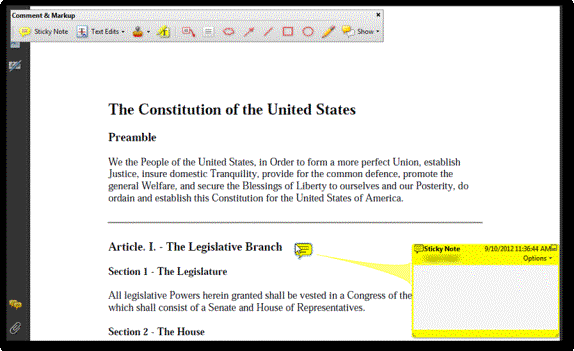
Now, type the comment in the pop-up window.
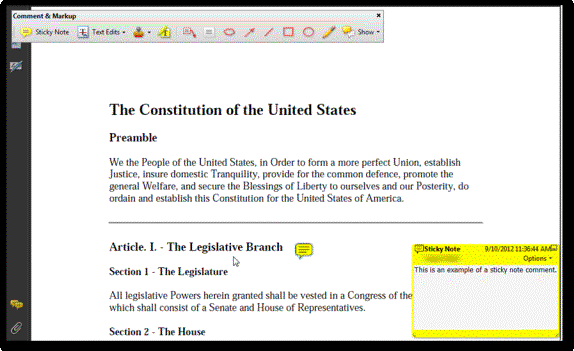
If you want to move the location of the comment, simply click and drag on the icon.
To change the sticky note icon, right click on the icon in your document, then click Properties from the dropdown menu.
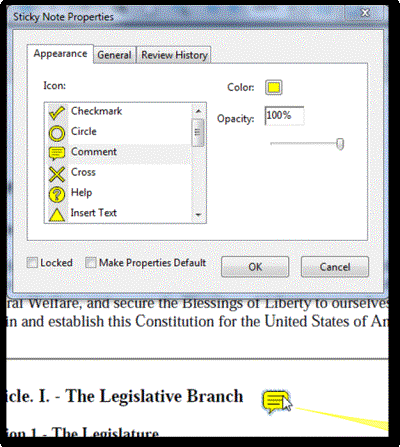
In the icon box, choose the type of icon you want.
Add a Text Box Comment
A Tex Box comment is like a sticky note except there isn't a pop-up window. The comment is in a rectangular box on the page.
To add a Text Box comment, click the Text Box comment icon in the toolbar: 
Now, click and drag on your document to draw the rectangle.
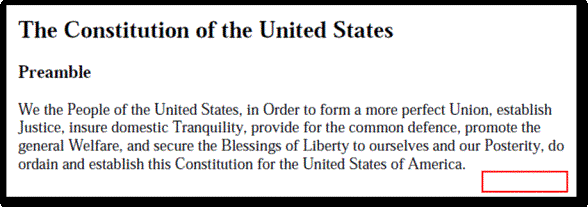
Click in the rectangle to type your comment.
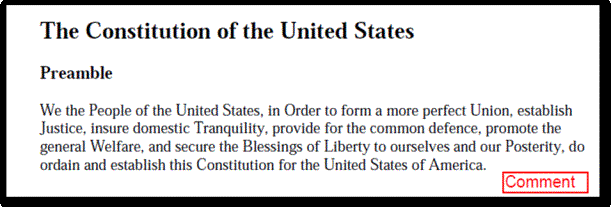
To change the color of the rectangle, go to the Select & Zoom toolbar. Click on the Hand tool:  . Now, click on the text box in the document.
. Now, click on the text box in the document.
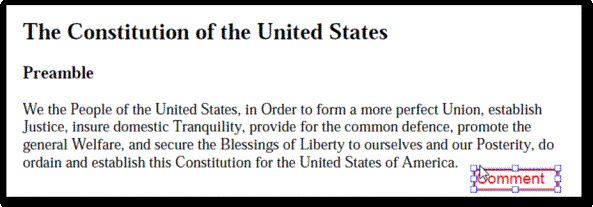
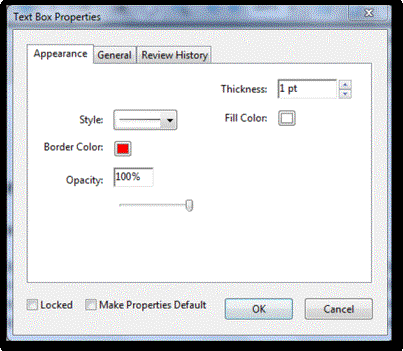
To change the text properties inside a textbox, go to the Properties Bar (View>Toolbars>Properties Bar).

Double-click on the text inside the text box on the text you want to change.
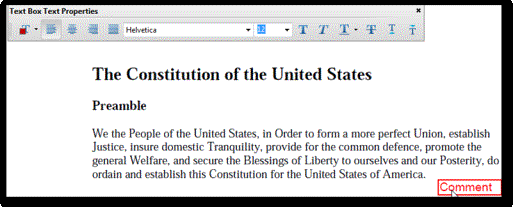
When you do so, the type of text you're using shows in the Properties Bar. Ours is Helvetica. Our font size is 12.
You can now change the font type, size, or color ( ).
).
Adding a Callout Comment
A Callout Comment is simply a text box with an arrow attached.
To add a Callout Comment, click the icon on the Comments & Markup toolbar:  .
.
Next, click and drag the rectangle on your PDF page.
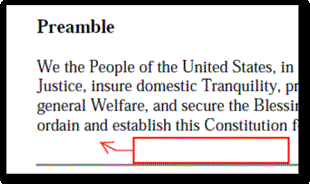
You can click on the border of the comment to make handles appear. You can then drag to move the box or reposition the arrow:

You can also add lines and arrows to your PDF pages to point things out or underline things. Go to the Comment & Markup tool and either select the Line  or Arrow
or Arrow  tool.
tool.
We're going to select the Arrow tool.
Next, click and drag in the PDF document where you want the arrow (or line) to go.
The starting point when you drag will be the head of the arrow:
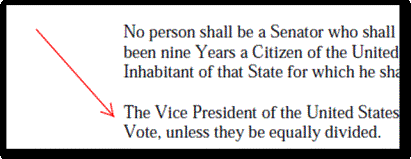

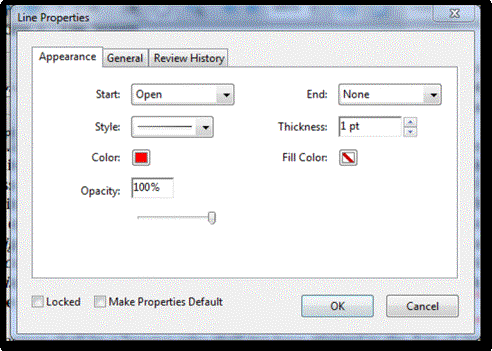
You can also draw ovals and rectangles around text in your document, then add comments to them. Let's learn how to do that.
First, select either the Oval tool  or the Rectangle tool
or the Rectangle tool  from the Comment & Markup toolbar.
from the Comment & Markup toolbar.
Click and drag to draw the oval or rectangle on your PDF document.


To change the color of the oval/rectangle or other attributes, right click on the oval/rectangle and select Properties.
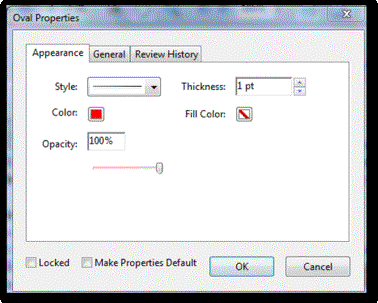
To resize the shape, click on the Hand tool, then click on the border of the shape. Handles will appear. You can drag the handles to change the shape:

Clouds can also be added to a PDF document much in the same way as rectangles and ovals.
 on the Comments & Markup toolbar. Click on your document to determine the starting point of the cloud.
on the Comments & Markup toolbar. Click on your document to determine the starting point of the cloud.Now, essentially click on all four points (or corners) of the cloud to make up its shape.
Below is a snapshot after two clicks, one on the left and one on the right:

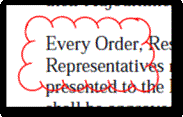
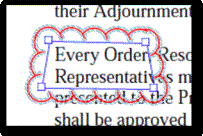
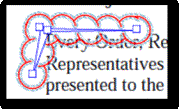

If you need to indicate changes that need to be made to text in a PDF document, you can use the Text Edit tools. The Text Edit tools include annotations to mark text for replacement and deletion, as well as to mark an insertion point for missing text.
You can find the Text Edit tools on the Comments & Markup toolbar. It looks like this:

By clicking on the downward arrow, you can see all the different markup tools available to you for editing text.
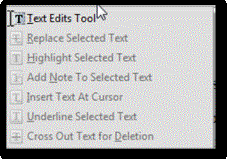
- Highlight Selected Text. This adds a backdrop to the text that's selected.
- Insert Text at Cursor. This indicates that text needs to be inserted into words already on the PDF document.
- Crossout Text for Deletion. This puts a line through the selected text and marks it for deletion.
- Replace Selected Text. This strikes through the selected text, then places an insert-text caret at the end. This is the indication that new text needs to be inserted. A pop-up window contains the new text.
- Add Note to Selected Text. This highlights the text. There's a pop-up window that contains the note.
- Underline Selected Text underlines text.
To add markup to a page, click the Text Edit tool (not the dropdown arrow).
The mouse pointer then turns into an I-beam shape.
If you want to create an insertion point, click the location on the page. A blinking cursor will appear.
With all other types of edits, select the text that you want to mark up by clicking and dragging across the text. Make a selection using the Select tool
 on the Pan & Zoom toolbar.
on the Pan & Zoom toolbar.Next, click the downward arrow beside the Text Edits button and select the type of edit you want to perform.
In the snapshot below, we've selected text:
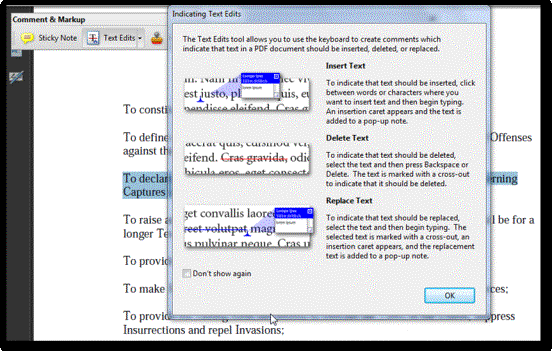
As you can see, the Indicating Text Edits dialogue box opened. This is simply explaining the types of edits you can do when you select text.
Click OK.
We've selected Crossout Text for Deletion:

The text now contains a line through it.
Adding a Stamp Comment
One of the most popular types of comments in Acrobat is the Stamp comment tool
 . If you click the downward arrow beside the tool, you can see the different types of stamps available:
. If you click the downward arrow beside the tool, you can see the different types of stamps available:
You can also create a custom stamp by selecting Create Custom Stamp.
Take some time to explore the different stamps. We're going to use the Initial Here stamp for this article.
To place a stamp on your document, click the dropdown arrow beside the Stamp tool and choose your stamp. Now, click on the Stamp tool. Acrobat prompts you for some information:
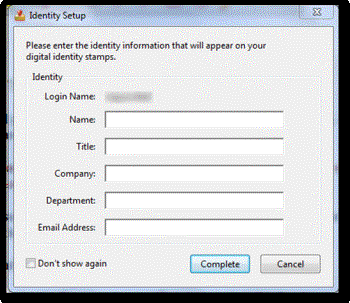
Setup your identity by filling in the fields in the Identity Setup dialogue box, then click Complete.
Now, simply click on your document where you want to place the stamp.

Use the Hand tool and double-click on the border of the stamp to add a comment:
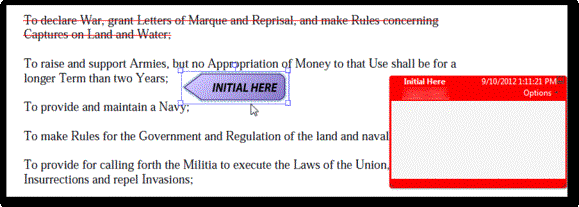
Reading Comments in Documents
We've learned how to add comments to a PDF document. However, what if you receive a PDF with comments in it? How do you read those?
Naturally, you can always double-click on the annotation to read the comment in a pop-up window, but Acrobat gives you more time-efficient ways to quickly look at all comments in a document.
The Comments List is located in the Navigation Pane. It looks like this:
 .
.Let's click on the Comments List in the Navigation Pane:
As you can see, it shows you a scrollable list of all comments in the document:

It also gives you tools to manage the comments.
Reply to Comments
Let's say you want to reply to a comment. Simply click on the comment you want to reply to, then click the Reply button:
 . Acrobat expands the comment entry, and adds a new line for your reply.
. Acrobat expands the comment entry, and adds a new line for your reply. Mark Comments
You can also use the Comments List to mark comments.
If you want to let someone know that you've reviewed a comment, first choose the comment in the Comments List, then select the Set Status tool
 (located in the Comments List toolbar).
(located in the Comments List toolbar).The dropdown menu allows you to set a status for the comment.
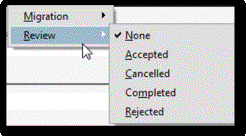
For a reviewed comment, select Review from the dropdown list, then choose the appropriate status. We've chosen Accepted.

As you can see in the above snapshot, Acrobat adds a status message below the comment letting users know the comment was approved, as well as the date and time for the approval.
The Checkmark Tool
The Checkmark tool
 in the Comments List toolbar is simply for your use. As you're looking through comments, you can use it however you want. Let's say you want to mark all comments that reference a certain topic, such as cats. You can put a checkmark before the comment so that you can easily find them.
in the Comments List toolbar is simply for your use. As you're looking through comments, you can use it however you want. Let's say you want to mark all comments that reference a certain topic, such as cats. You can put a checkmark before the comment so that you can easily find them.You can see a checkmark in the snapshot below. It's located to far left of the comment:

Show Comments
The Show tool
 in the toolbar lets you decide how you want the comments to show in the Comments List. If you click on the downward arrow beside the Show button, you'll see the various ways you can show comments. In addition, you can hide the Comments List.
in the toolbar lets you decide how you want the comments to show in the Comments List. If you click on the downward arrow beside the Show button, you'll see the various ways you can show comments. In addition, you can hide the Comments List. 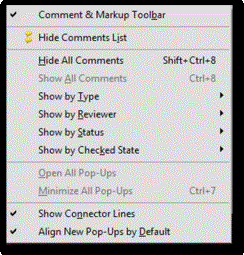
Sort Comments
You can also sort comments by using the Sort tool
 .
.Click the downward arrow to see the methods you can use to sort comments:
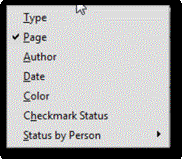
You can sort by comment type (sticky note, text box, etc.), page, author, date, color, checkmark status, or status by person.
Search Comments
You can also search for a word or phrase in the document's comments. To do this, click on the Search Comments button in the toolbar. It looks like this:
 .
.When you click on the tool, a search box will open:
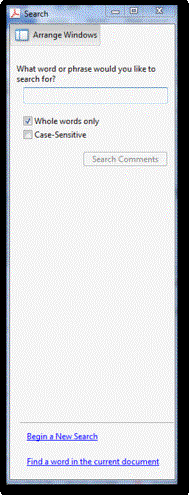
Enter the word or phrase you want to search for, then click Search Comments.
Print Comments
You can print a summary of the comments, or you can also create a PDF of the comments summary. To do this, click the Print button in the toolbar:

Choose if you want to send the comment summary to your printer or create a PDF.

We're going to create a PDF.

In the Summarize Options dialogue box, choose the layout for your PDF. These options are all self-explanatory and are based on personal preference or need.
Click Create PDF Comment Summary.
It's displayed for you in a new document window:
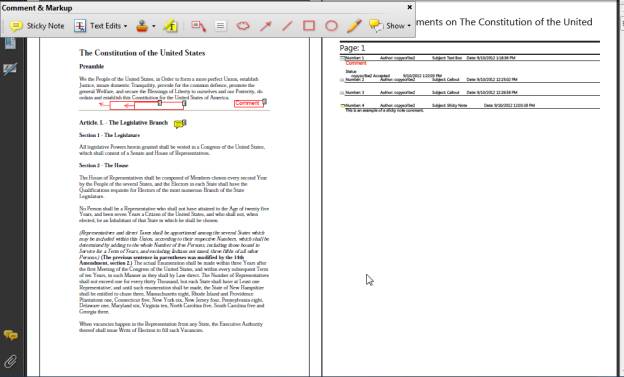
Make sure to save the file.

































